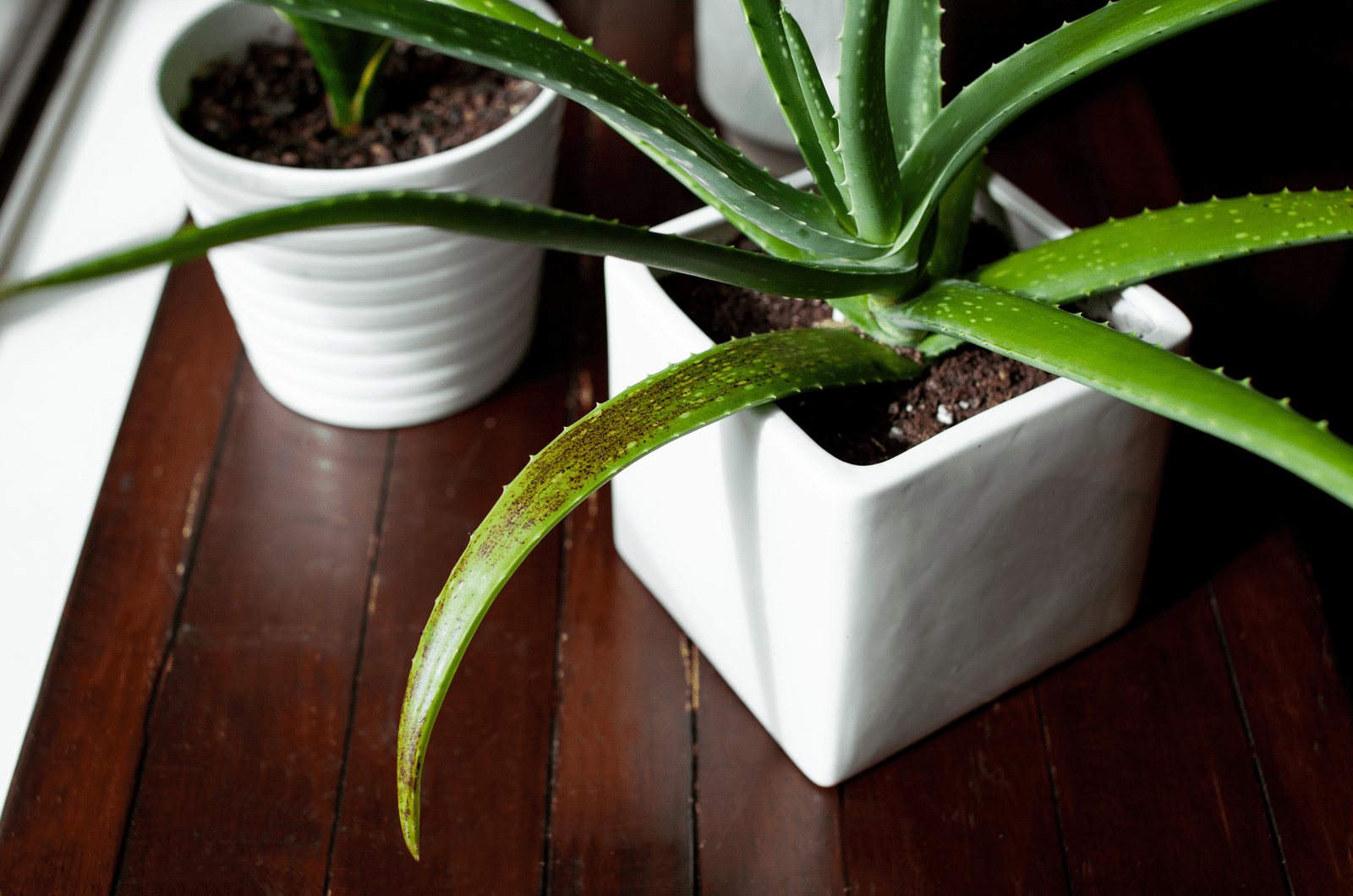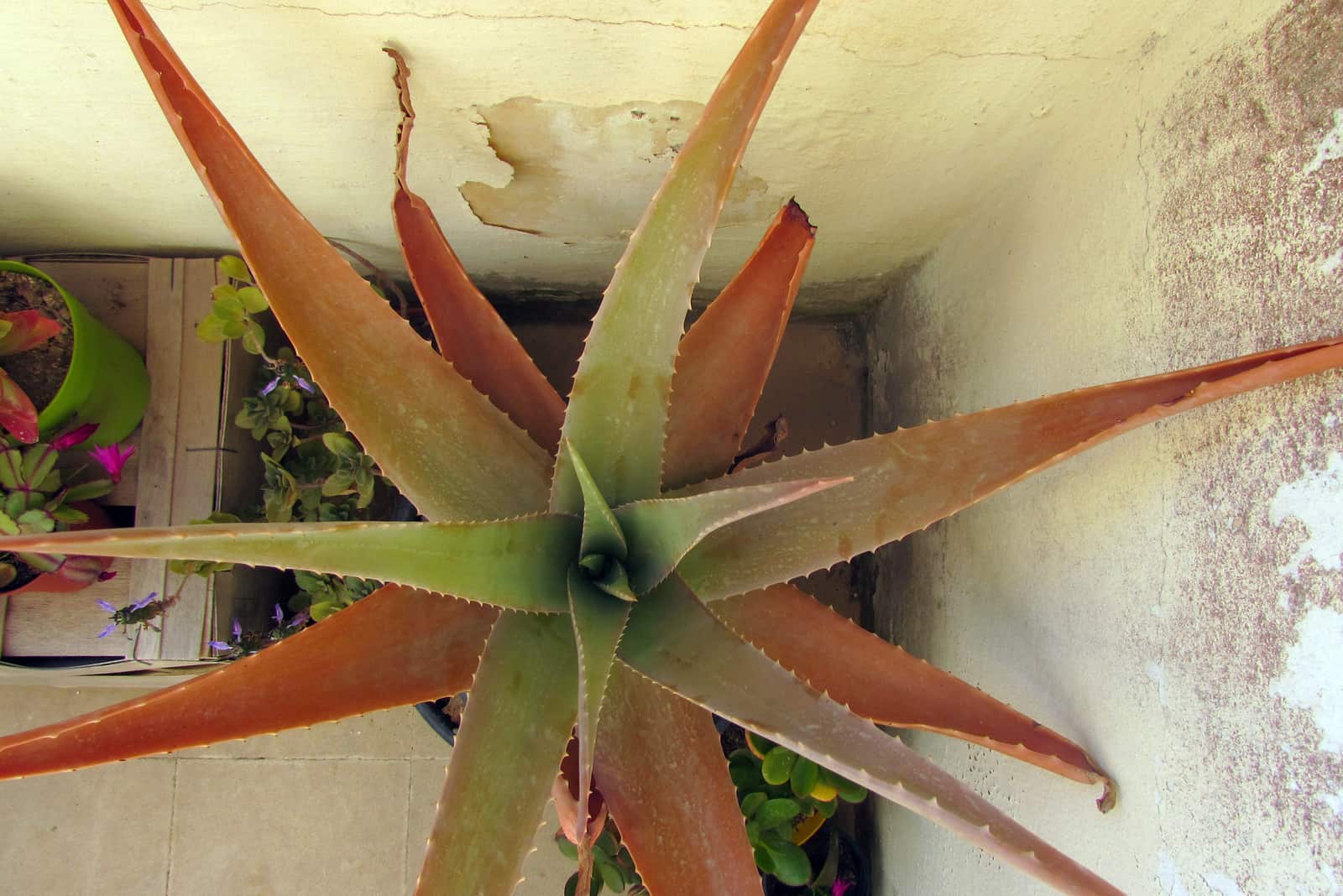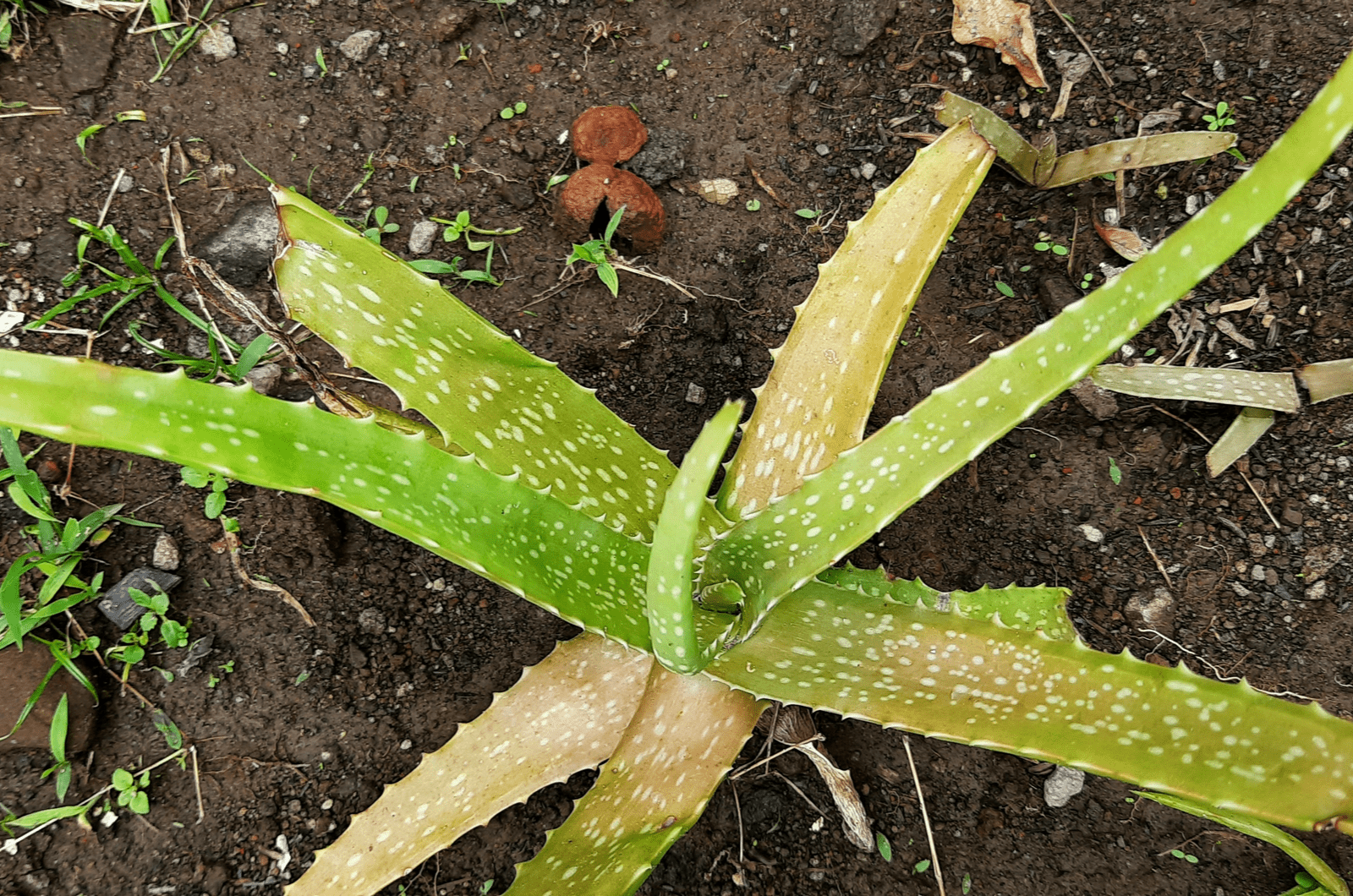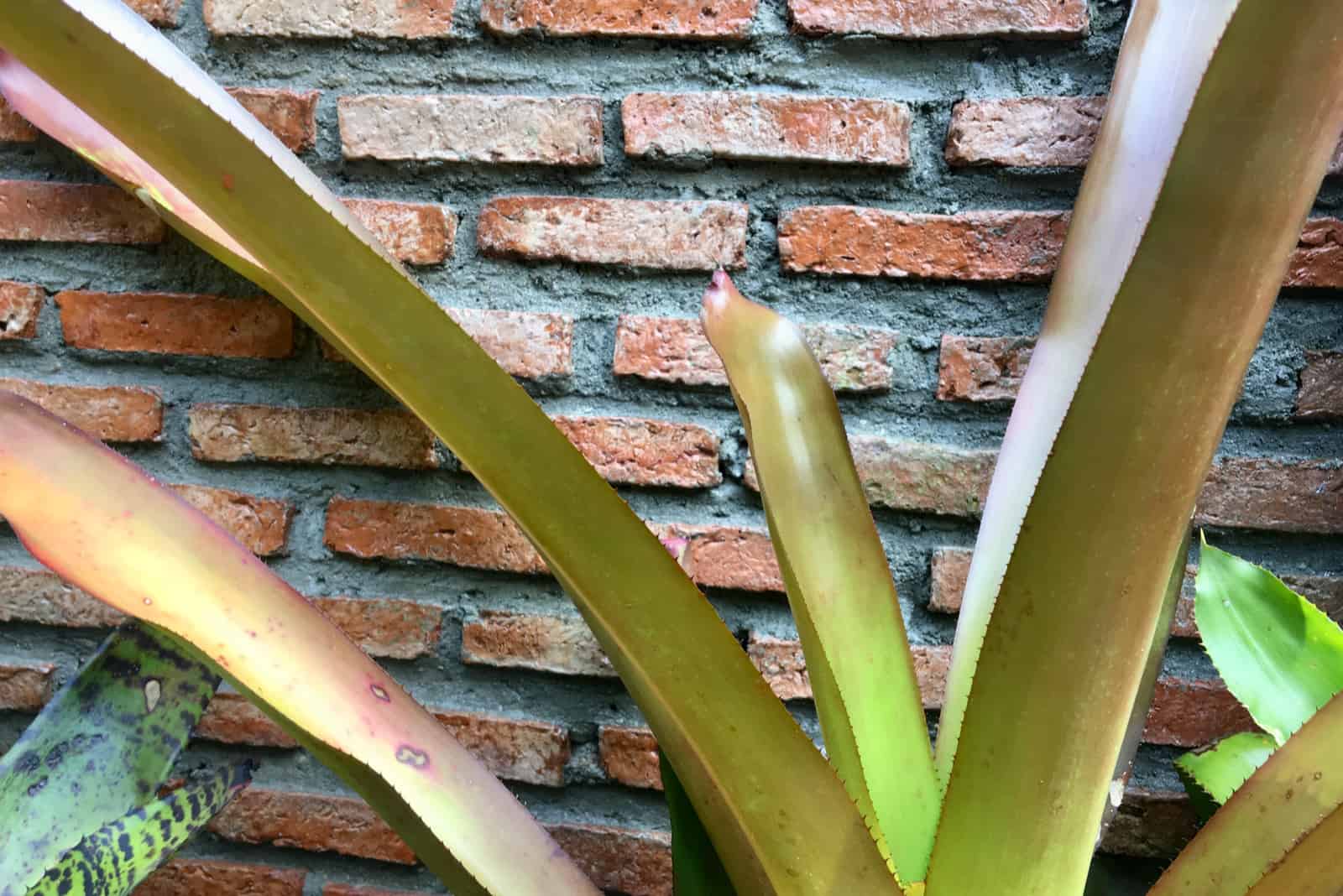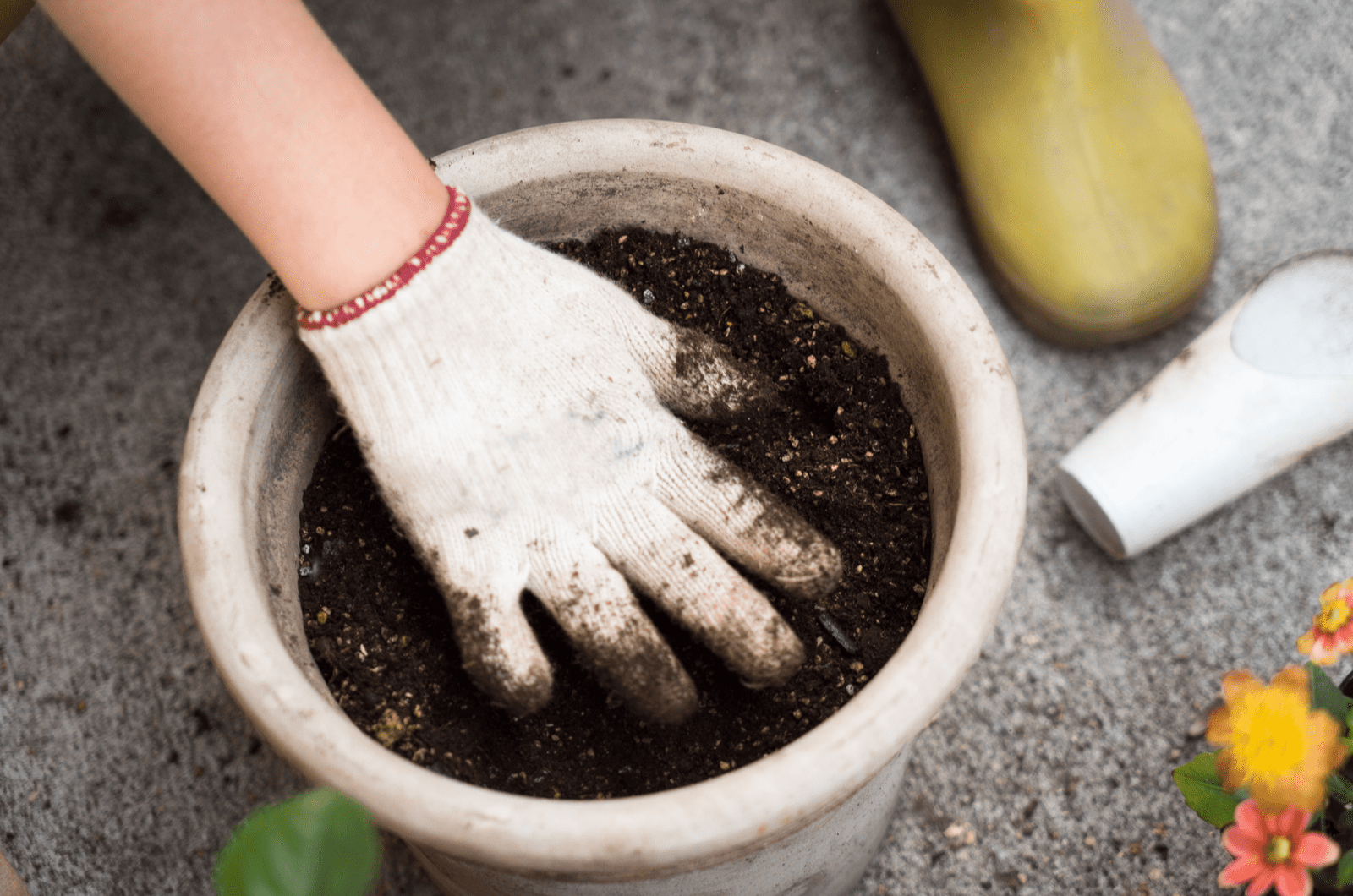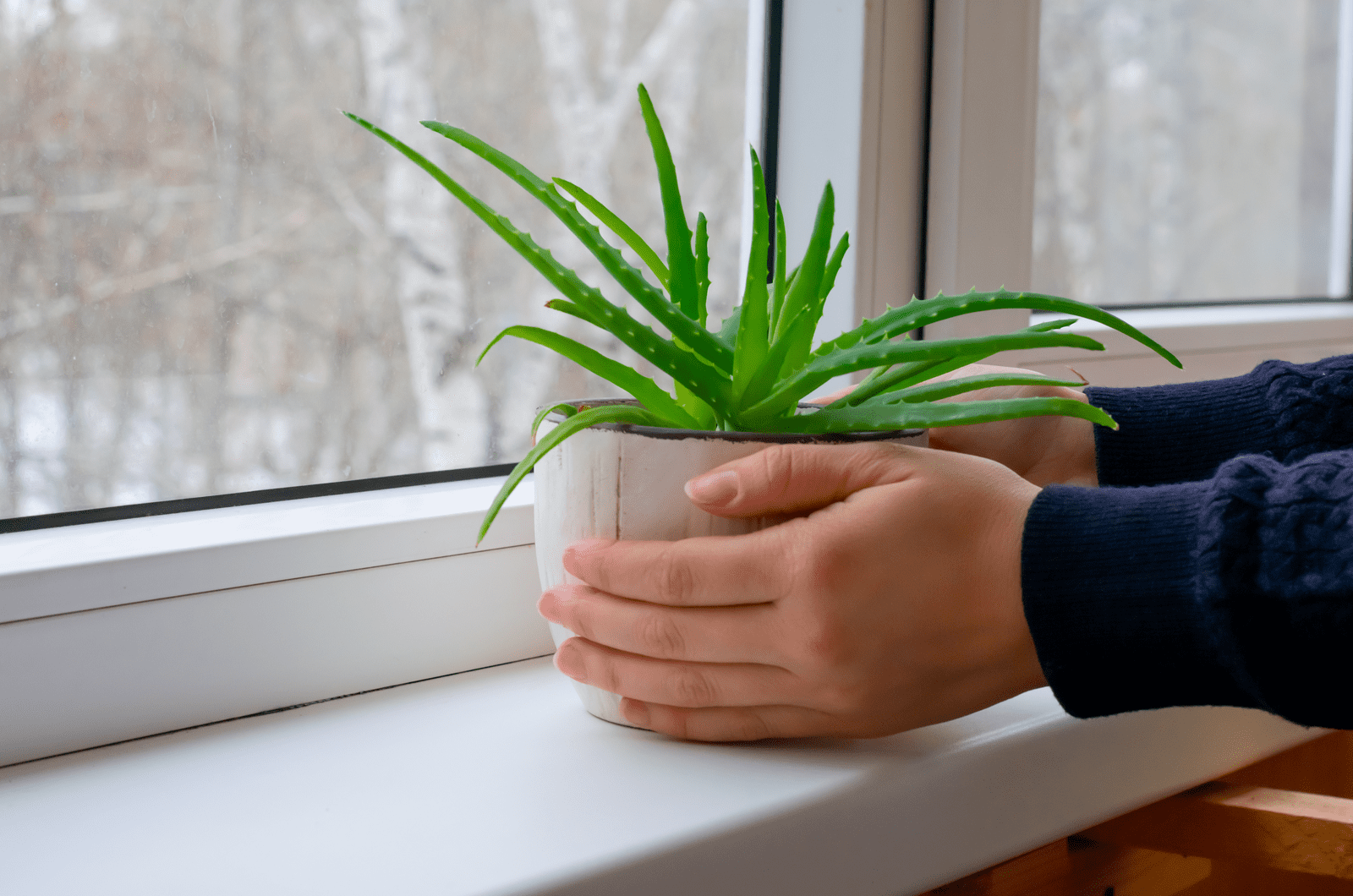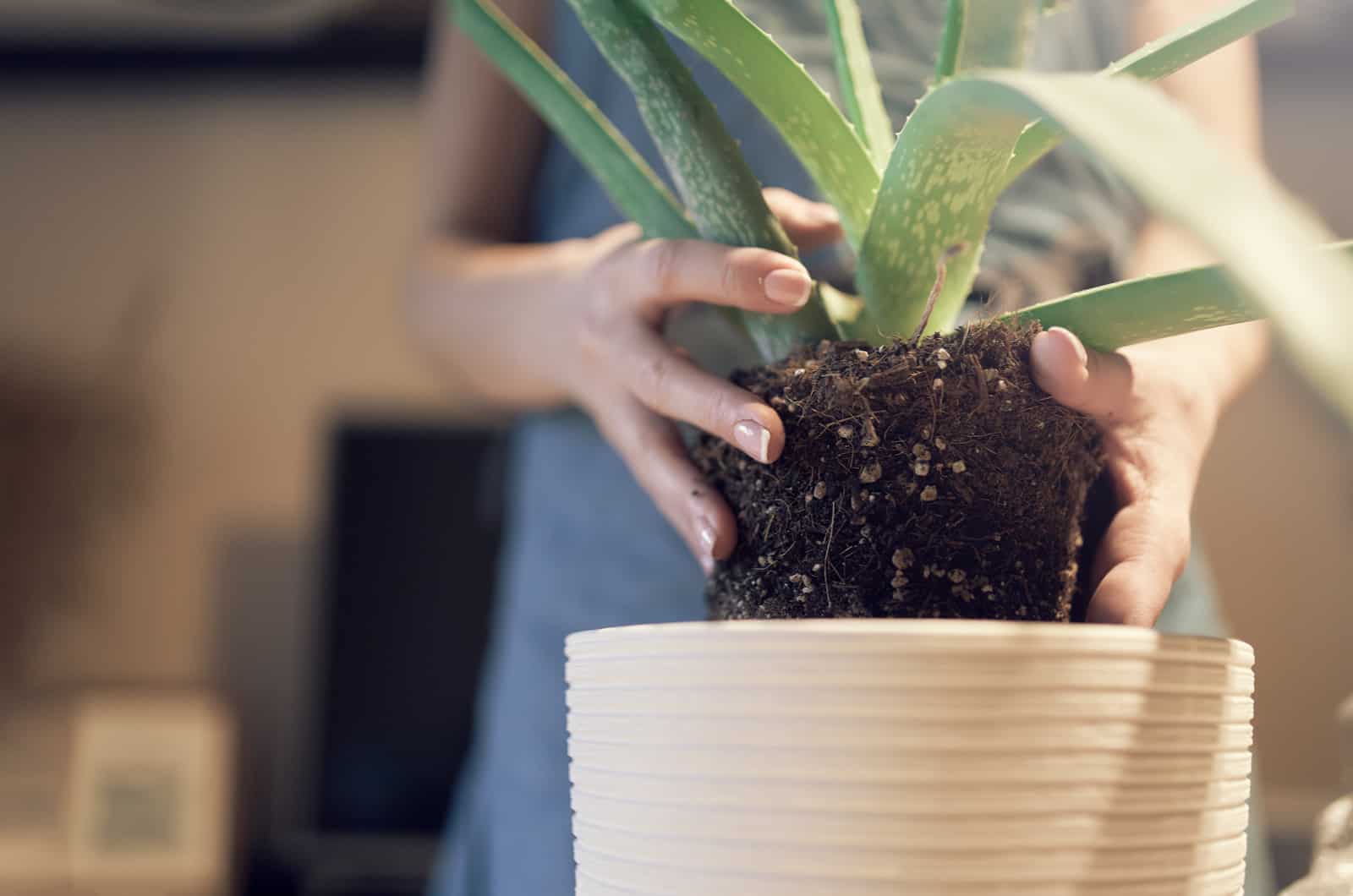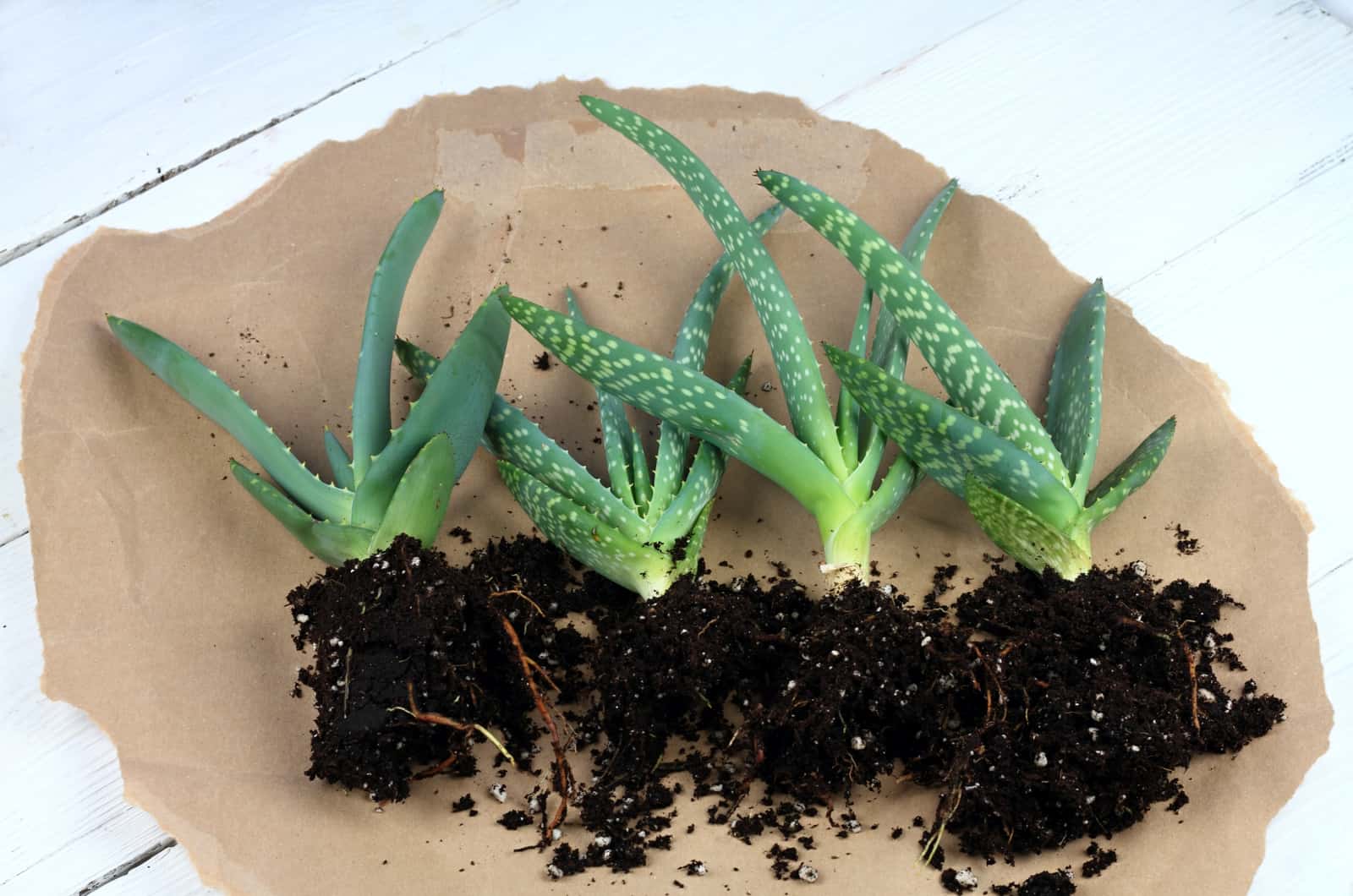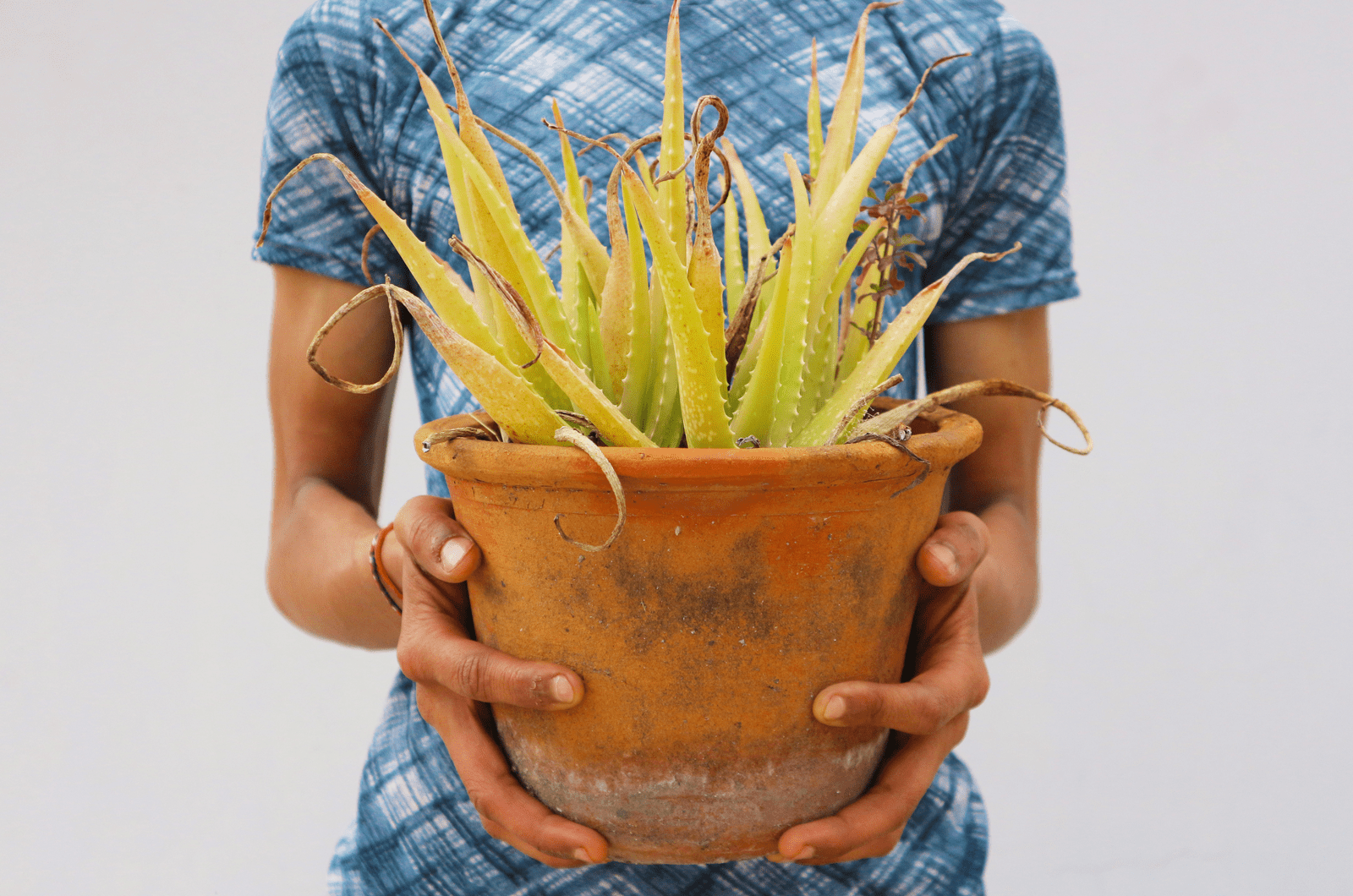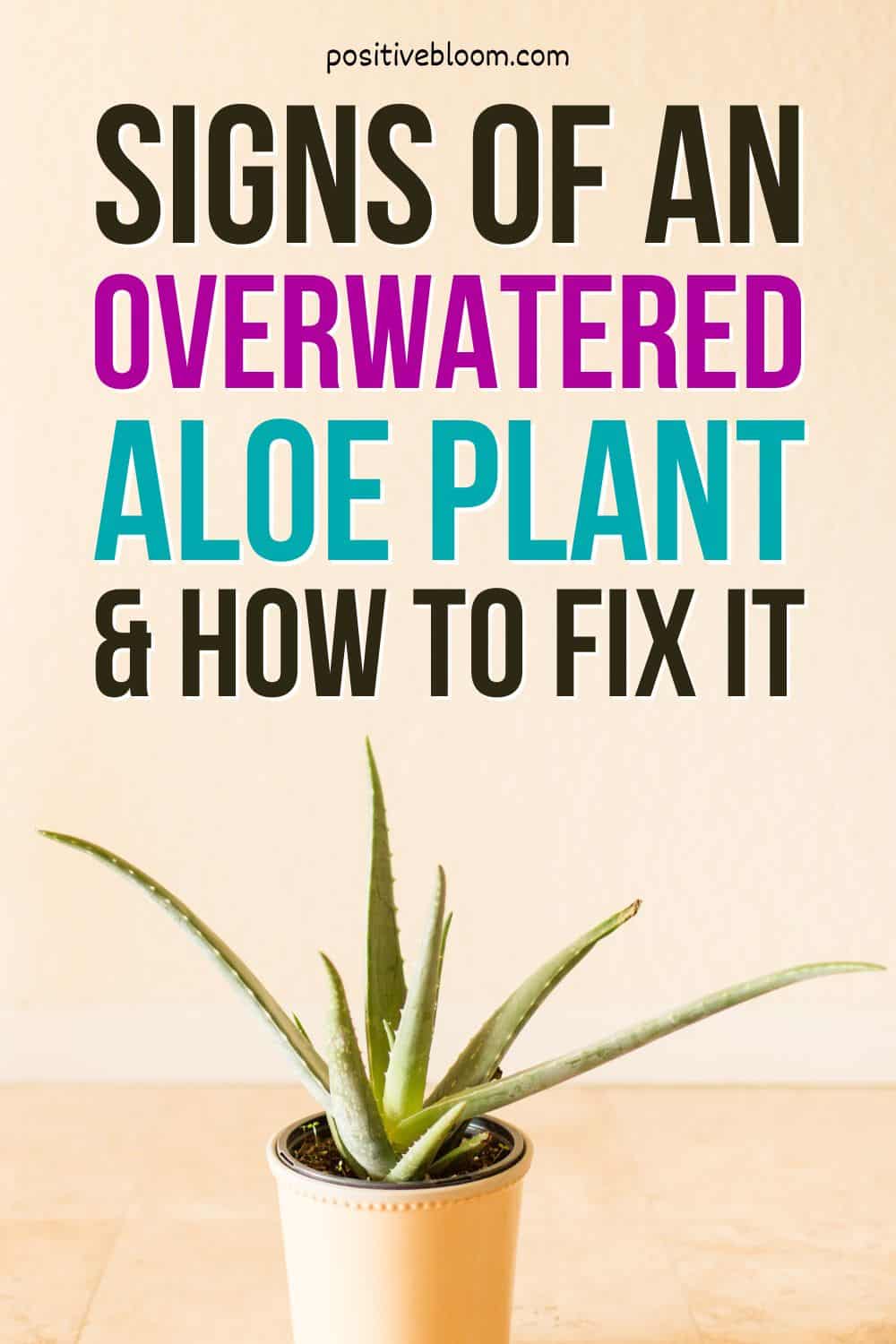The Aloe plant is a succulent that does not require any special plant care — it is even drought-tolerant, which is why this plant is ideal for all the busy plant enthusiasts out there! Even if you forget to water your Aloe Vera plant now and then; don’t worry, it won’t be stressed out!
On the other hand, if you are too enthusiastic about your plant and you have been watering it regularly, then there can be certain issues.
Inadequate watering is a common issue when it comes to taking care of houseplants, and especially the ones that don’t require watering that often. If you notice yellowing of the leaves, wilting, discolorations, browning tips… These are all signs of either overwatering or underwatering.
But hey, don’t worry — you can still save your beloved plant!
Read on to find out the signs of an overwatered Aloe plant, and how to fix it.
What Are The Signs Of An Overwatered Aloe Plant
Aloe Vera is an evergreen plant, meaning that its leaves are the same and do not change throughout the year… However, if you notice that the leaves are changing, there must certainly be some issues with your plant.
There can be some changes in the stems and roots as well, although you might need to do some digging to find out the answer so… let’s dig in!
1. Leaves Changing Color
Aloe Vera leaves have a beautiful green color and glossy texture; they are the reason why this succulent is so popular nowadays… Well, the leaves and the numerous skin care benefits!
But, if the leaves are turning yellow, mushy, shrivel, or are even transparent; and you have been frequently watering the plant, then the issue might be overwatering.
Sometimes, the tip of the leaves can turn brown because of inadequate watering, though it is also related to nutrient deficiency. Completely brown leaves may indicate fungal diseases, or an improper watering schedule.
Not only that, but blisters can form on the leaves due to excess water: the cells absorb water and become hypotonic, which results in the swelling of the cells.
Houseplants mainly have drooping leaves with a soft texture if overwatered, along with soggy soil and yellow leaves as well.
2. From Soggy Soil To Root Rot
Watering Aloe plants can be tricky if you are used to watering plants like a Dolphin or a Spurge plant, since they need frequent watering. If you apply the same watering schedule to your Aloe Vera plants as well, your plant will suffer from water stress.
Asides from plant leaves, other parts of the plant are just as harmed by too frequent watering. For instance, if the plant has soggy soil for too long, this makes it a perfect environment for fungi and pests.
Fungal infection leads to root rot, which prevents the plant’s roots from properly uptaking the nutrients… if your plant does not get enough nutrients, it will eventually die.
Now, it can be hard to distinguish whether you are dealing with root rot, as this is all happening beneath the soil surface. However, if the soil is soggy and starts to smell bad, then you should take the plant out of the pot and investigate: damaged roots with a black or brown color are a sign of root rot (the smell is even worse down there!).
3. Stem Looking Mushy
Just like cells in the leaves, stem cells are also going to retain excess water, which leads to the stem looking even more mushy and soft.
Mushy stem is an obvious sign of overwatering, and it is the reason why the whole plant looks weak and droopy. Once you notice that the stem of your plant is looking different, immediately reconsider your watering schedule — bear in mind that your plant needs a little water to survive.
4. Mold On The Soil Surface
A white, kind of fluffy substance on the soil surface is actually saprophytic fungus. White mold appears mainly in an overwatered Aloe Vera plant, however, it can also appear due to a lack of sunlight, as well as contaminated potting soil.
Sometimes, this mold can also appear on the leaves, but it usually chills on the soil surface.
What Can Lead To Overwatering Issues?
Overwatering is a pretty self-explanatory term, however, there can be a few other factors that might lead to improper drainage of water.
For instance, inadequate potting soil or the wrong container can be the cause of overwatering, as well as unfavorable weather conditions, such as high humidity levels and so on.
Let’s go step by step and determine the issues leading to an overwatered Aloe plant, and how to deal with them.
1. Frequent Watering
Yes, the main cause of overwatering is too frequent watering. Growing Aloe plants does not usually require a lot of special plant care, which is why folks often forget that this is a succulent that can tolerate having its soil dry!
Bear in mind that these are not cacti plants, and they will still be needing some water… so, how to give your Aloe Vera just enough water to keep her happy and healthy?
Well, how much water your plant needs depends on the provided conditions; for instance, if your Aloe plant is getting direct sunlight early in the morning, then you should water it at least once a week.
If you are growing your Aloe plant indoors, where it gets bright and indirect light, then you should water it every other week. The reason why we water plants like this is because the soil will dry quickly if it gets direct sunlight everyday.
However, the best watering tip we can give you is that you should check if the first 2 inches of the topsoil have dried out: if so, then it is time for watering. You can either start watering from the bottom or from the top.
If you have chosen to water your Aloe plant from the top, make sure to put water in a sprayer and spray the plant in the evening. Avoid watering the leaves and washing out the soil.
On the other hand, if you want to do it from the bottom, then I would suggest you fill a pan with water in which you will put your Aloe plant; this should be done early in the morning so that your plant has enough water and nutrients.
And lastly, if the soil is not completely dried out once you have checked it, then I would suggest you check again in a few days.
2. Inadequate Soil
Your Aloe plant will thrive in a well-draining soil that does not retain too much moisture; it also does not prefer a too compact soil. If the soil is too soggy for a long time, it can lead to clogged or rotting roots, which affect the overall health of your plant.
The most optimal potting mix for your indoor plant is a succulent mix — I am sure that you’ll find it in any garden shop nearby.
You can also make your own soil mix, to promote a healthy root system and water drainage: you can mix sand with perlite, bark and grit — trust me, your plant will absolutely love it!
3. Wrong Container
When it comes to choosing an appropriate container for your Aloe plant, growers often think that it is better to buy a larger pot, compared to the plant and its root ball, and to provide it with enough space, but this is a mistake.
Yes, you should buy a pot that is slightly larger than the root ball of your plant — nonetheless, if it provides the plant with too much space, the soil will retain much more moisture than needed, which can again, lead to overwatering.
Another thing you should look for when buying pots are the drainage holes at the bottom of the pots — these holes enable excess water draining.
If you find a pot that is absolutely stunning, but it does not have drainage holes at the bottom, don’t worry! You can always drill the holes at the bottom, just don’t make them too big.
4. Harsh Weather Conditions
If you are growing your Aloe Vera plant outdoors, make sure to protect it against heavy rain during summer; but if you are growing it indoors, you should pay attention to the humidity.
High humidity levels in the room create additional moisture for your plant, and your plant might suffer from similar symptoms to overwatering. Tropical houseplants usually thrive in high humidity, so I would not recommend that you combine these two types of plants.
So do not turn on your humidifier that often, your Aloe plant won’t like it!
How To Fix An Overwatered Aloe Plant
Your Aloe plant has started showing signs of overwatering… what to do now?
Don’t worry, we’ve got you!
First, you will have to determine the severity of the problem: you might have watered it a few more times than usual and now the soil is soggy and your plant does not like it; or, it has been a continuous process, which has led to root rot.
If you assume that the plant is showing mild symptoms of overwatering, then I would suggest that you first stop watering it, then leave it in direct sunlight for a few hours in the morning — be careful not to let your plant get sunburn!
You can also leave it in indirect light — it does not matter, as long as the soil is going to be able to completely dry out. While you wait for the soil to dry, you should pay attention to the leaves (texture and color), as well as the overall appearance of your plant: is it droopy or not?
If it starts looking better, then you have probably solved the overwatering plant problems. On the other hand, if the soil starts to smell badly and the plant is still looking kind of droopy and yellowish, then the issue is probably root rot.
How To Deal With Root Rot
Root rot is a dangerous disease for many houseplants and can be caused by too frequent watering. If it is not treated carefully, it can lead to the complete destruction of the plant.
In the case of your Aloe plant looking like it has no way of recovery, you can always look for offshoots and propagate your plant.
Take a look at the instructions below and learn how to deal with root rot!
1. Take The Aloe Plant Out Of The Pot
At this point, there is no other way to establish root rot disease than taking the entire plant out of the pot and examining its roots. The easiest way to do this is to turn the pot upside down and slightly tap on the bottom of the pot.
If this does not do the trick, then you can simply break the container or use trowels and insert them around the plant to dislodge it from the soil.
After you have taken out the plant, carefully examine the roots.
2. Remove Damaged Roots
If you notice any black or brown decaying roots, you should cut them off immediately, without damaging the healthy roots and offshoots!
Use sterile gardening scissors for cutting the damaged roots, and you should clean them with a hydrogen solution after every cut. If the disease has started spreading, you might have to cut some of the mushy leaves as well.
Be careful not to cut any of the healthy leaves though, as they are required to photosynthesize and provide enough energy for the recovery of your plant.
3. Apply Fungicide
You should apply fungicide to save you some trouble and make sure that the disease does not appear again. I recommend that you apply hydrogen peroxide to the roots, and to the new pot as well.
This way, you will make sure that the new potting mix does not get infected with the same fungus and prevent new growth and development.
4. Choose An Appropriate Pot
As we have previously mentioned, the pot should be slightly larger than the root ball of your Aloe plant. It is better to use a wider pot instead of a narrow one, because as the plant grows it becomes a lot heavier which can turn over the pot.
Don’t forget about the drainage holes as they are an important factor when it comes to draining excess water from the soil.
5. Use Adequate Potting Mix
Before putting what is left of your plant in the new pot, you should fill it halfway with a succulent potting mix that is well-draining and nutrient rich.
We have also mentioned that you can make your own soil mix by combining perlite and river sand together with bark.
6. Repotting An Aloe Plant
What is left to do is the repotting: after you have half filled the new pot with adequate soil, put your plant in the soil, and then fill out the rest of the pot with the same soil.
You can slightly tap the soil to make it more compact. Bear in mind that you should remove the soil from the roots before repotting, because that soil has been infected with fungus. If you do not get rid of it, it can infect your entire plant all over again.
Propagation
If you have overwatered your plant to the point that it can not be revived, the last thing you can do is look for offshoots at the base of the plant and try to grow an Aloe plant once again, from scratch.
Propagation process is pretty straightforward, and it is suitable for beginner gardeners as well!
Please follow these instructions to successfully propagate your Aloe plant:
1. Look for pups or offshoots at the base of the plant. They look like a small Aloe plant, growing next to the mother plant. These offshoots should still be viable and can be used for propagation, even if the plant has suffered water stress.
2. If you see these pups, then you should take your plant out of the pot and start separating the roots. The offshoots are easily detectable, and you should remove the soil from them as it is contaminated by the fungus.
3. Use disinfected knives or gardening shears to cut off these little pups.
4. You can put these cuts in water, or in an appropriate soil. I suggest you use soil, because your plant has already suffered from being overwatered.
5. You should repot your baby Aloe plant in a new pot, with an adequate mixing soil and drainage holes at the bottom. Keep it in a dry place with indirect light, and water when the soil dries out.
6. If you notice any healthy leaves on your overwatered Aloe plant, you can use leaf cuttings instead to propagate the plant. However, this is usually not the case because the leaves primarily change and show signs of overwatering.
Differences Between Overwatering And Underwatering An Aloe Vera Plant
The signs of overwatered and underwatered aloe plants are somewhat similar, and sometimes it can be hard to distinguish which one it is: brown leaf tips can appear in both cases, as well as drooping of the leaves.
Underwatered Aloe plants have droopy leaves that eventually start to turn yellow, and this is often followed by the browning of the leaf tips. An Overwatered Aloe plant has mushier leaves that are beginning to look paler and transparent.
The brown patches and discolorations might also appear on the leaves of an underwatered Aloe plant.
The simplest thing that you can do is to look at the soil: if it is wet and it kind of smells bad — this usually indicates that you have been overwatering your Aloe plant. The soil will be compact and dry in the case of underwatering.
If you check beneath the soil’s surface, you will be able to see decaying roots in an overwatered Aloe plant; on the other hand, an underwatered plant will have brittle roots and powdery soil.
Frequently Asked Questions
1. What is the best way to water an Aloe plant?
The best way to water an Aloe plant is to check the soil before watering. You can use your fingers, or you can also use a moisture meter. Aloe plants are succulents that don’t require that much water, which is why it is pretty easy to overwater this plant.
Other factors that also affect the water requirements are the temperature, humidity and the lights provided: for instance, if you keep it under direct sunlight for a few hours, the soil will dry out quicker and your plant will need watering again.
On the other hand, if the plant is kept indoors in a place with indirect sunlight, the soil will take a few more days to dry out.
2. What should you do if your Aloe plant is not receiving enough water?
You should check the soil first; in most cases, the Aloe is not planted in appropriate, well-draining soil. Your Aloe plant needs sandy soil that is not too compact, so that it can easily absorb and drain the water.
You can also boost humidity levels in your room, and water the plant much more frequently but always check if the soil has dried before watering it.
3. How to revive an Overwatered Aloe Vera plant
First, you should determine the severity of this overwatering issue: if the plant has been watered more often, and the leaves are starting to change — then, you should stop watering it and leave it under direct sunlight for a few hours.
If the overwatering leads to root rot, then you should cut off the damaged roots and repot the plant in new soil that is fungus-free.
If the damage is done and your plant can not be revived, you can always look for offshoots for propagation, and start growing your Aloe plant from scratch.
Final Thoughts
There are many benefits of the Aloe plant, especially in cosmetics because nowadays it seems that almost all moisturizers and creams have been made with Aloe plants (and they cost a fortune!). You can grow this plant and make your own creams and face masks, and at the same time, improve your home decor!
Aloe is a type of tall succulent that does not require frequent watering, which is why overwatering is a common problem when growing Aloe as a houseplant.
Nonetheless, every problem has a solution, therefore, you might still be able to save your overwatered Aloe plant!
Until next time!
Like this post? Share or pin it for later!

